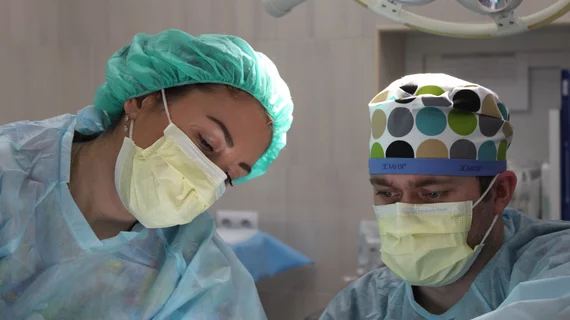Radial access shows potential to ‘revolutionize’ care for peripheral artery disease
Radial access (RA) provides interventional cardiologists with a safe and effective alternative to femoral access during peripheral artery interventions, according to new research published in JSCAI.[1]
The study’s authors focused on data from 120 patients with peripheral artery disease who were treated at one of eight U.S. facilities from June 2020 to June 2021. The mean patient age was 68.7 years old, and 68.3% of patients were men. A total of 224 complex endovascular lesions were treated over the course of the analysis, including 12.9% in iliac vessels, 55.3% in femoro-popliteal vessels, 11.9% in isolated popliteal vessels and another 19.5% in tibial vessels. Meanwhile. 33.6% of treated lesions were chronic total occlusions.
Overall, the study’s primary efficacy endpoint—procedural success without a conversion from radial to femoral access and without RA-related complications—was seen in 93.3% of patients. While 65 patients underwent right RA, 55 underwent left RA. No serious adverse events were associated with these procedures, though 16.7% of patients did experience “nonserious” RA site complications.
The authors also found that these procedures were linked to a mean procedure time of 74 minutes and a mean time-to-ambulation of 3 hours and 30 minutes and a same-day discharge rate of 93.3%.
“This study contributes to the growing body of evidence supporting the use of RA for peripheral artery interventions,” lead author Mehdi Shishehbor, DO, president of the University Hospitals Harrington Heart & Vascular Institute, said in a prepared statement. “As medical professionals continue to explore different approaches, advances in technology and techniques are expected to further enhance the safety and efficacy of these procedures. With its potential to improve patient outcomes and satisfaction, RA may revolutionize the field of peripheral artery interventions.”
Shishehbor et al. did note that their research was associated with certain limitations. Direct comparisons could not be made, for example, because the study did not include a separate group of patients treated exclusively with femoral access. Also, there is a potential for “selection bias” because patients were selected for this study by their interventional cardiologists.
“Future studies should compare technical and clinical success, procedural time, and costs associated with transradial versus transfemoral peripheral intervention,” the authors wrote.
Click here to read the full study in JSCAI, the official journal of the Society for Cardiovascular Angiography and Interventions.

